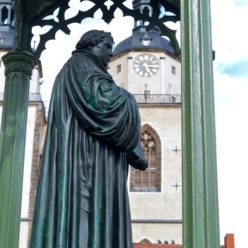A. M. Anton and F. Kremer
Peter Debye Institute for Soft Matter Physics, University of Leipzig, Linnéstr. 5, 04103 Leipzig
Spider dragline silk exhibits remarkable characteristics such as exceptional toughness arising from high tensile strength combined with great elasticity. Its mechanical properties are based on a refined architecture on the molecular scale: Proteins with highly repetitive core motifs aggregate into nanometer-sized crystals, rich non alanine in β-sheet secondary structure, surrounded by an amorphous, glycine rich matrix. During spinning the less ordered parts are elongated, which orients both substructures and gives rise to an inherent non-equilibrium state. Thus, external stress is directly transferred to the crystallites, as demonstrated by FTIR experiments in combination with uniaxial stress [1] or hydrostatic pressure [2].Spider dragline silk exhibits remarkable characteristics such as exceptional toughness arising from high tensile strength combined with great elasticity. Its mechanical properties are based on a refined architecture on the molecular scale: Proteins with highly repetitive core motifs aggregate into nanometer-sized crystals, rich non alanine in β sheet secondary structure, surrounded by an amorphous, glycine rich matrix. During spinning the less ordered parts are elongated, which orients both substructures and gives rise to an inherent non-equilibrium state. Thus, external stress is directly transferred to the crystallites, as demonstrated by FTIR experiments in combination with uniaxial stress [1] or hydrostatic pressure [2].Even though the protein structure has been thoroughly studied, until recently it was not possible to artificially re-create this exceptional (morphological and functional) architecture. We show that wet spinning of a novel biomimetic protein results in fibers with a similar nanostructure as the natural template. However, only post spinning strain induces a microscopic non-equilibrium that gives rise to a similar mechanism of energy dissipation as in natural spider silk and comparable macroscopic toughness [3,4].
References
[1] P. Papadopoulos, J. Sölter, and F. Kremer, Eur. Phys. J. E 24, 193 (2007). (link)
[2] A. M. Anton, C. Kuntscher, F. Kremer et al., Macromolecules 46, 4919 (2013). (link)
[3] A. Heidebrecht, T. Scheibel et al., Adv. Mater. 27, 2189 (2015). (link)
[4] A. M. Anton, M. Beiner, T. Scheibel, F. Kremer et al, manuscript submitted
